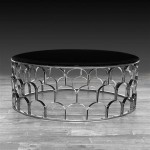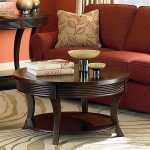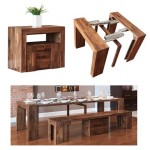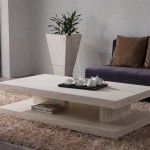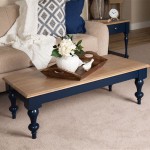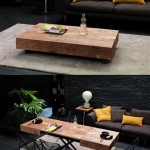How To Make A Table Out Of Pallets
Creating a table from recycled pallets offers a cost-effective and environmentally friendly solution for furnishing a home, patio, or workspace. This process can be accomplished with basic tools and a moderate level of DIY skill. This article will outline the steps involved in transforming reclaimed pallets into a functional and aesthetically pleasing table.
Step 1: Pallet Selection and Acquisition
The first step involves sourcing suitable pallets. Pallets can often be found discarded behind businesses or offered for free or low cost on online marketplaces. However, caution must be exercised regarding pallet safety. Some pallets are treated with chemicals, indicated by an IPPC stamp. These markings indicate the type of treatment used. Heat-treated pallets (HT) are generally safe for repurposing, while chemically treated pallets (MB) should be avoided for indoor furniture projects. Always prioritize HT-stamped pallets.
Step 2: Disassembly and Cleaning
Once suitable pallets are acquired, they require disassembly. This can be a laborious process. A reciprocating saw or pry bar is recommended for efficient removal of nails and planks. Care should be taken to avoid splitting the wood. After dismantling the pallet, the individual planks should be inspected for damage and sorted according to size and condition. Thoroughly clean the planks using a stiff brush, soap, and water. Allow the wood to dry completely before proceeding.
Step 3: Planing and Sanding
To achieve a smooth and even surface, planing the reclaimed wood is essential. A planer will remove splinters, rough edges, and surface imperfections. This step also ensures uniform thickness across the planks. Following planing, sanding is crucial to further refine the wood's surface. Start with a coarser grit sandpaper (e.g., 80-grit) and gradually progress to finer grits (e.g., 120-grit, then 220-grit) for a polished finish. Proper sanding will enhance both the appearance and tactile quality of the finished table.
Step 4: Tabletop Construction
The tabletop construction begins by arranging the prepared planks side-by-side to achieve the desired table dimensions. Consider the overall aesthetic when arranging the planks; variations in wood color and grain can add character. Once arranged, secure the planks together using wood glue and either screws or nails driven from the underside. Supporting crossbeams should be attached beneath the tabletop for added stability and to prevent warping. These crossbeams can be made from additional pallet wood or purchased lumber.
Step 5: Base Construction (Legs or Frame)
The table base can take various forms, depending on the desired style and functionality. Four individual legs can be attached directly to the tabletop's underside or a frame can be constructed, providing a more robust base. Pallet wood can be utilized for the legs or frame, or alternative materials like metal piping can be incorporated for a more industrial aesthetic. Ensure the chosen base design provides adequate support and stability for the tabletop and intended use.
Step 6: Attachment of Tabletop to Base
Securely attach the tabletop to the constructed base. This can be accomplished using screws, bolts, or brackets, depending on the design of the base and tabletop. Ensure all connections are tight and stable to prevent wobbling. Careful alignment of the tabletop and base is essential to achieving a level and functional surface.
Step 7: Finishing
The final step involves finishing the table to protect the wood and enhance its appearance. Various finishing options exist, including paint, stain, and sealant. Painting offers a wide range of color choices and can provide a uniform look. Staining allows the natural wood grain to show through while adding color. A sealant, such as polyurethane, provides a protective layer against moisture and wear. The choice of finish depends on personal preference and the intended use of the table.
Variations and Considerations
The basic construction method outlined above can be adapted to create a variety of table styles. Coffee tables, dining tables, and even desks can be constructed using this approach. Incorporating additional features like drawers or shelves can add functionality. The dimensions and overall design can be customized to suit individual needs and preferences.
Safety Precautions
Throughout the entire process, appropriate safety precautions should be observed. Always wear safety glasses and gloves when working with power tools and handling reclaimed wood. Work in a well-ventilated area, especially when sanding and applying finishes. Dispose of waste materials responsibly.

Pallet Table Easy To Make Diy

Diy Pallet Coffee Table No Power Tools

One Of A Kind Pallet Wood Dining Table

One Of A Kind Pallet Wood Table

Diy Pallet Potting Bench My Happy Simple Living

Diy How To Make Table From Pallet Wood

Diy Pallet Wood Coffee Table

Pallet Picnic Table

Diy How To Build A Pallet Table 101 Pallets

How To Create A Pallet Coffee Table In One Afternoon Eye On Design
Related Posts

